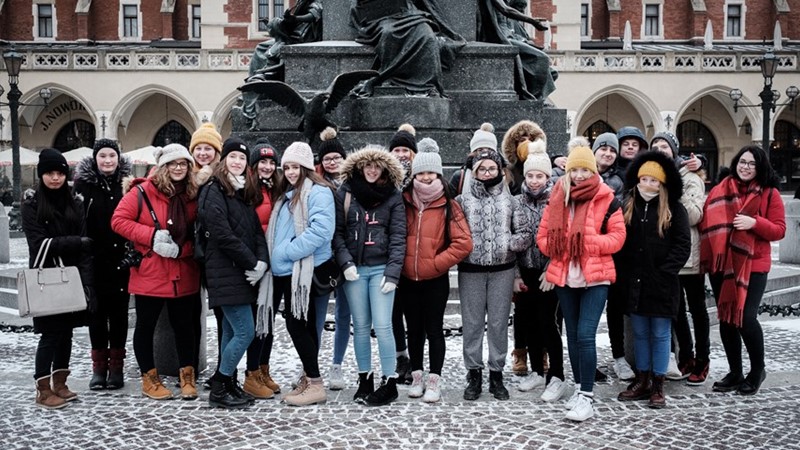Poland 2019 as told by trip leader, Shane Harrison.
After a five-hour coach journey and a sprint to the gate, we finally made it onto the plane as passengers were boarding. Once we arrived in Poland we were greeted by snow, a chilly -7 degrees, and our guide for the week, Barbara.
The next morning we were taken to Auschwitz 1 where were explored the barracks and exhibitions at the camp. Some of the rooms displayed mountains of children’s clothing and shoes, which were taken from them as soon as they arrived on the cattle carts. Because of their inability to work, children (along with pregnant women, anyone over the age of 50 and people with disabilities) were immediately taken to the gas chambers. One room contained several tonnes of human hair, which was cut from the heads of prisoners both before and after they were killed. The hair was originally stored in large sacks to be later used for lampshades, clothing, carpet and other fabrics. We then walked through one of the gas chambers before moving on to Auschwitz Birkenau.
Upon arrival at Birkenau the first thing that shocked the students was the sheer scale of the operation. The combined concentration and extermination camp covers over 400 acres. It is estimated that over 1,100,000 people were killed here between 1940 and 1945. During our tour of Birkenau we visited the ruins of two gas chambers and spent some time inside one of the many ‘death barracks’, wandering around the rows of concrete and wooden bunk beds.
The following day we were taken on a tour of Krakow, starting in the centre of the Kazimierz district. Here we visited one of the still active synagogues in the heart of Kazimierz, located in an old square. The square is surrounded by incredible Jewish restaurants and quirky cobbled side-streets. The registration scene in the film Schindler’s List was also filmed at this location. After leaving the square we were then taken through the Jewish Ghetto area before heading to Wawel Castle which contains the tombs and sarcophagi of several Polish Kings.
On our final morning of the trip we visited the Wieliczka salt mines. After descending 443 feet of narrow wooden stairs, we were given a tour of the grand chambers, underground lakes, chapels and exhibits.
The trip was an incredibly sobering yet culturally enriching experience and the students will have stories to tell for many years to come.

